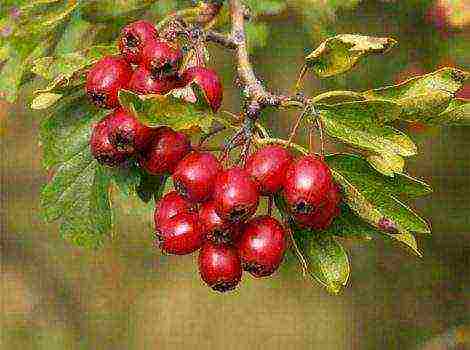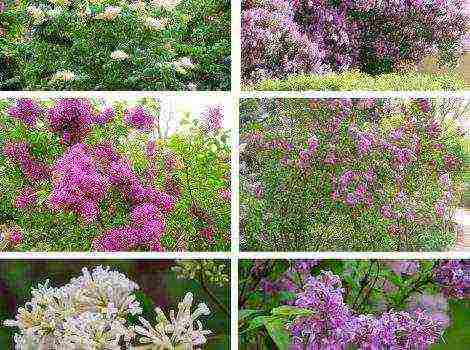Content [show]
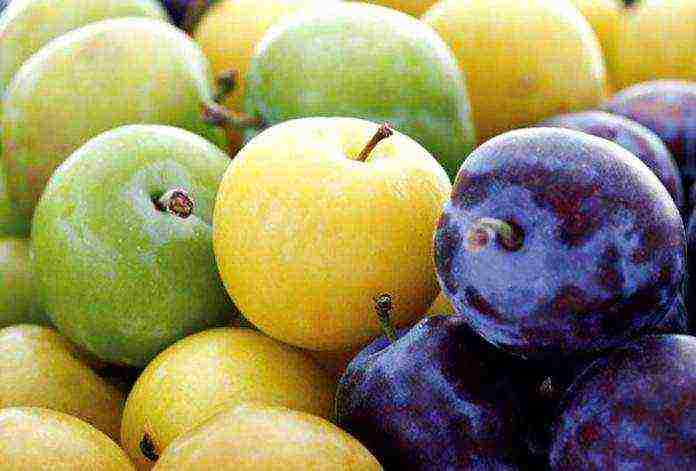
Cherry plum, like a fruit tree, occupies a worthy place in the gardens of summer residents. And this is not surprising. Being a variety, or rather, a relative of the plum, the cherry plum tree is much more unpretentious than plum trees. Cherry plum trees are not afraid of dry periods, are less demanding on the composition and fertility of the soil, are very productive (one tree can give a summer resident 100 kg of berries per season), they live long (45-60 years), and the cherry plum varieties newly bred by breeders are also frost-resistant.
About cherry plum
Note that until recently, cherry plum could only be grown in regions where there are no severe winters or spring frosts, since the wild cherry plum is initially a thermophilic plant. But today, thanks to the efforts of breeders, cherry plum varieties have been developed that are resistant to adverse weather conditions. And varieties of such trees feel great in our gardens.
Cherry plum, as a culture, ripens very quickly (in August-September), and differs in that its fruiting begins already in the third year after planting the seedling. Like any fruit tree, cherry plum is propagated by seeds, grafts, or layering. The tree has very strong roots located close to the surface of the earth (in the upper layers of the soil).
The variety of cherry plum species is impressive!
Its pulp is green, yellow, pink, watery or fleshy-cartilaginous. Cherry plum taste can be sweet and sour, sour, or sweet and sour. The peel of the berry is red, yellow, orange, green, purple, black. The bone can be either well or poorly separated.
The color of the berry indicates a greater or lesser content of this or that useful substance in it. So, yellow berries contain a large amount of carotenoids, which are indispensable for vision, growth, skin, reproductive organs (their sexual development and maturation). And in black cherry plum there are many pectins and anthocyanins - natural helpers in the prevention of cancer and atherosclerosis.
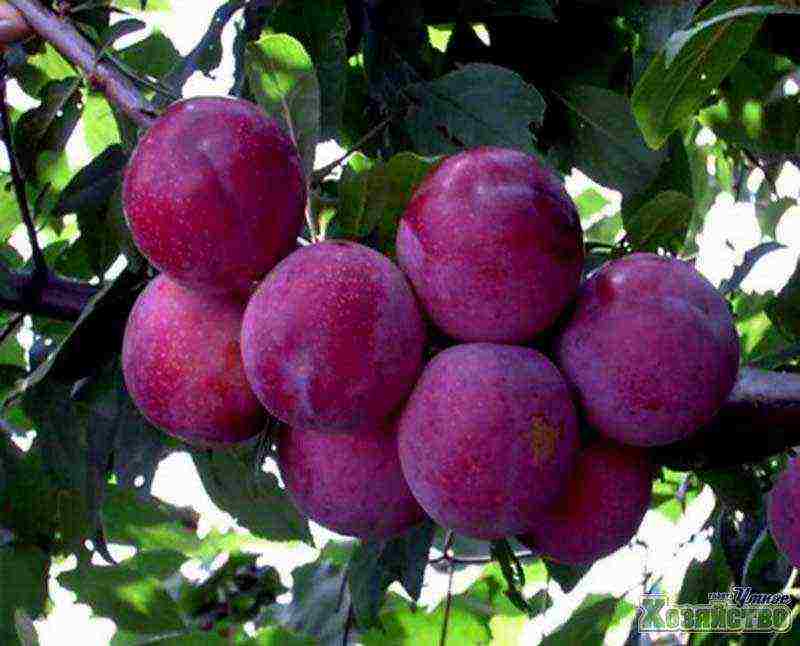 Cherry plum. Kuban comet
Cherry plum. Kuban comet
Useful properties of cherry plum
This is about the trees themselves. And, if we talk about the beneficial properties of cherry plum fruits, then they are really very useful for the human body.
They contain carbohydrates, vitamins C, A, group B, and pectins, and trace elements such as potassium, iron, magnesium, calcium, phosphorus.
That is, cherry plum is an excellent addition to our diet, so the cherry plum tree is worth growing in your summer cottage.
And what delicious products you can cook from cherry plum, prolonging the benefits of the berry for the winter-spring avitaminosis period! Jam and tkemali sauce, jam and jam, jelly and juice, kvass and wine, compote and marmalade, as well as dried cherry plum as a prune - these are the delicious treats you can pamper your loved ones with, having a couple of cherry plum trees in your garden!
We add to this that decorative cherry plum trees have been created that have variegated or red (purple) foliage, or an interesting crown shape: weeping or pyramidal. Such trees very much decorate the summer cottage, from them you can create hedges, alleys, high curbs.
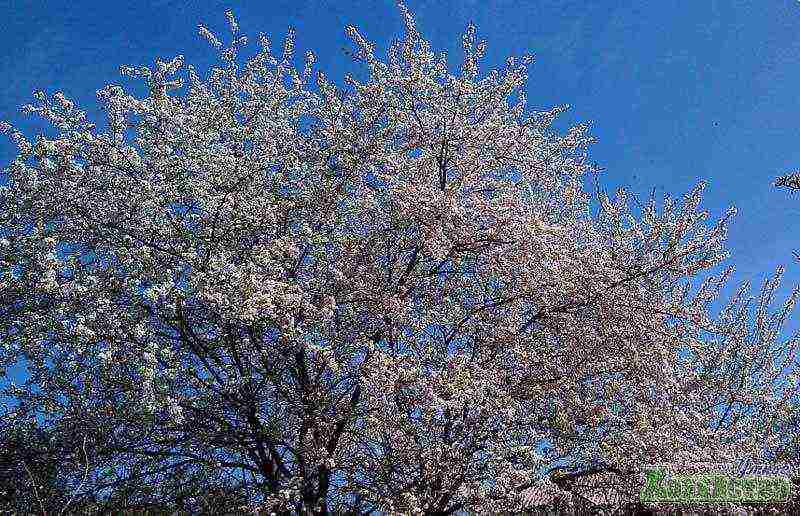 Cherry blossoms
Cherry blossoms
New varieties of cherry plum
Breeders are in constant search of new varieties of cherry plum so that the tree is as little as possible exposed to any negative influences from the outside: cold, drought, pathogenic microbes, fungi, pests. I also really want the seed to be easily separated in the berry, so that more nutrients are present in it, so that the tree begins to bear fruit faster, and brings the maximum yield.
Such goals are set by breeders. Scientists really liked the cherry plum as a "source material", since the culture easily crosses with any varieties of plum. Therefore, new varieties of cherry plum were given new properties:
- resistance to any external conditions (winter hardiness, drought resistance, undemanding to soil fertility);
- the presence in one variety of several medicinal properties at once, taken from several species at once (large-fruited, "fleshy", quick ripening, a certain color of the fruit, easy "bone separation", etc.).
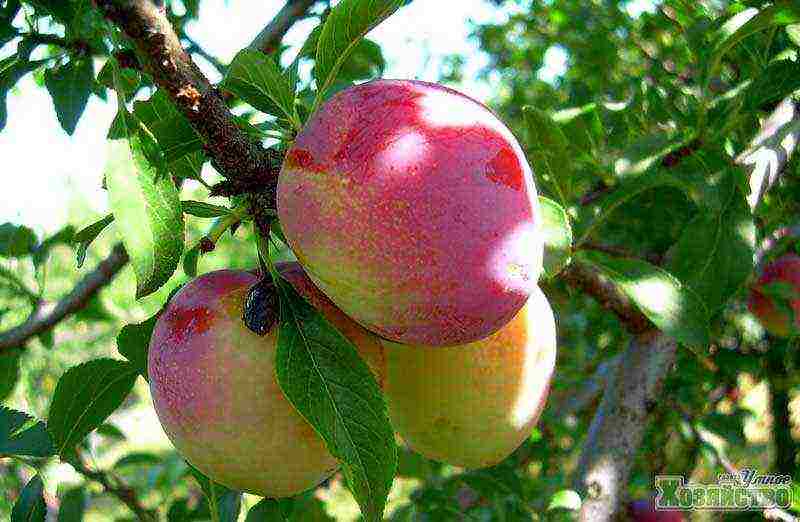 Cherry plum. Kuban comet
Cherry plum. Kuban comet
The best varieties of cherry plum for growing in the country
There are many new varieties of cherry plum today, and in order to choose the best one for your site, and corresponding to your tastes and preferences, you need to know that varieties are divided into such types according to different criteria:
- By ripening time on the:
- early (July-August)
- medium (August)
- late (August-September)
2. By the size of the tree on the:
- high (6 meters)
- medium-sized (3-5 meters)
- undersized (up to 3 meters)
Based on these characteristics of the varieties, you can already select the one suitable for your site. Let's point out a few more characteristics that influence the choice of cherry plum variety.
Cherry plum varieties
Frost-resistant varieties:
- Cleopatra
- Kuban comet
- Gold of the Scythians
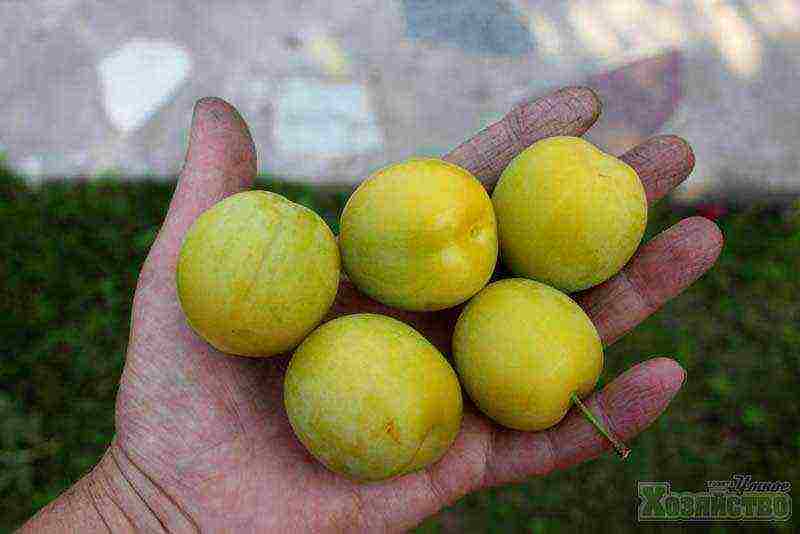 Cherry plum varieties Zlato Scythians
Cherry plum varieties Zlato Scythians
Of all the listed varieties Cleopatra and Kuban comet are self-fertile varieties that do not require pollinators.
The highest yielding varieties are Gold of the Scythians and Kuban comet... Cleopatra and Gold of the Scythians are characterized by a semi-detachable bone.
Cherry plum varieties Tsarskaya very good for growing in a summer cottage: frost-resistant, giving high yields, and fruiting in the second year after planting with dense, juicy, tasty and aromatic berries. Take advantage of the Tsar's cherry plum, choose it for growing.
Cherry plum varieties Huck, fruiting with yellow large berries, is self-fertile, that is, other cherry plum trees are needed in the garden, medium-ripe, resistant to diseases and pests and ripening in April-May. Huck gives very high yields, the disadvantage is poor separation of the bone. The variety is considered one of the best in terms of its medicinal properties.
May your garden delight you and benefit your health!
The best varieties of cherry plum. description, photo and rating of varieties
The best varieties of cherry plum. description, photo and rating of varieties
| Variety name | Pop. | Weight | Ripening period | Height | Colour | Regions |
| Kuban comet | 975 | Up to 40g | Average | Up to 3 m | Burgundy | 2,5,6,8 |
| Gold of the Scythians | 349 | 36-40g | Very early | Up to 4 m | Yellow | 3 |
| Tsarskaya | 318 | Up to 20g | Average | 1.6 m | Yellow | |
| Traveler | 249 | 18.5g | Early | Average | Red-violet | 2,3,5,6 |
| Abundant | 245 | 36-55 g | Average | 2.6-2.7 m | Red-violet | 6 |
| Gift to St. Petersburg | 239 | 12 g | Early | Average | Yellow | 2 |
| Mara | 213 | 23g | Average | High | Yellow | 2,3,4 |
| Found | 194 | 26-27g | Early | Average | Red-violet | 5,8 |
| Huck | 191 | 35 g | Mid late | Average | Yellow | 6 |
| the globe | 157 | 55 g | Average | High | Red-purple, dark | 6,8 |
| Nesmeyana | 143 | 30g | Very early | High | Light red | 3 |
| July rose | 116 | Up to 32g | Very early | Average | Red with pink | 6 |
| Tent | 116 | 32 g | Mid late | Low | Purple | 6, 8 |
| Cleopatra | 96 | 37g | Average | Average | Dark red violet | 3 |
| Sigma | 47 | 35g | Average | Average | Red-violet | |
| Andromeda | Average | 6 | ||||
| Dessert early | Average | 6 | ||||
| Melon | Early | 6 | ||||
| Evgeniya | Early | 6 | ||||
| Colon-shaped | Average | 6 | ||||
| Comet Late | Average | 6 | ||||
| Flint | Average | 6 | ||||
| Niberjaevskaya Early | Early | 6 | ||||
| Olenka | Late | 6 | ||||
| Gift to Garden Giant | Mid late | 6 | ||||
| Ruddy Dawn | Late | 6 | ||||
| Themis | Average | 6 |
Ripening dates for cherry plum
In different regions, cherry plum ripens in different ways, and for convenience, you can navigate by other plants - early varieties of cherry plum bear fruit simultaneously with late varieties of cherry, and later varieties - with late varieties of plum. Usually these are dates from mid-July (for early cherry plums, for example, the Gold of the Scythians) to the end of August (for the latest varieties, for example, Rumyanaya Zorka).
Cherry plum height
The cherry plum height usually ranges from 1.5 to 5 meters. The smallest are, for example, Tsarskaya cherry plum, and the tall ones are Mara.
Self-fertility
In almost any case, cherry plum for ripening requires that another variety of cherry plums grow next to it and the same flowering period for pollination. However, another plum is not suitable for pollination. Flowering dates are the same for those varieties that bear fruit at about the same time.
However, there are very rare varieties that, in a good climate and a good combination of circumstances, can bear fruit on their own. From our table, these include the Kuban comet and the July rose.
Separability of the bone
Another characteristic of cherry plum is the separability of the seed, that is, how easily the seed is separated from the pulp of the fruit. This is often very important, since in some varieties the pulp sticks very strongly to the bone, which is not very convenient when eating or harvesting cherry plum for future use. For example, these include the Traveler and the Gift to St. Petersburg. Fortunately, now there are many varieties in which the bone is separated from the pulp of problems, for example, Cherry plum Abundant
Cherry plum varieties with description and photo
Cherry plum varieties with description and photo 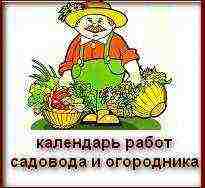
 To help novice gardeners, gardeners, flower growers. How to care for your garden all year round.
To help novice gardeners, gardeners, flower growers. How to care for your garden all year round.
Lunar calendar for 2017
Varieties of pink tomatoes.
Description and reviews of summer residents
When is it better to sow tomatoes for seedlings
Learning to grow roses from a presented bouquet.
Siderata. They planted it, and what next?
Supports for clematis.
Reproduction of clematis.
Propagation of roses by cuttings.
Planting petunias for seedlings. Growing perennials from seeds.
Growing seedlings of flowers.
How to plant trees correctly.
Apple and pear scab. Ground cover roses. Floribunda rose care. Planting and caring for climbing roses. How to feed tomatoes
Covering roses for the winter.
Preparing clematis for winter.
Roses in the fall.
Thanks to the efforts of breeders, more than a hundred varieties of cherry plum were bred, differing in taste and marketability, ripening times, indicators of frost resistance and yield. Today we will discuss the most popular cherry plum varieties among gardeners.
Large-fruited varieties
The palatability of fruits largely depends on their size. According to gardeners, large-fruited varieties, including cherry plums, are highly popular among agronomists. Among the many fruit crops, one can note the varieties Globus, Shater, Sigma, Byron Gold, Monomakh, Cleopatra, Gek, Mikhalchik, etc.
Tent
Low-growing cherry plum A tent with an aesthetically attractive rounded-spherical crown will be an excellent decoration for a garden plot. This crop copes well with frost, so it can be grown in regions with a harsh climate. The advantages of cherry plum Tent include resistance to fungal and viral diseases.
With proper care, the tree gives its first harvest 4–5 years after transplanting to a permanent place of cultivation. The tent has unique taste and product characteristics, behaves well during long-distance transportation.
Found
According to the description of the variety, Naydena cherry plum is resistant to winter and spring temperature extremes, and also has a high drought resistance. Subject to proper planting conditions and proper care, it is characterized by abundant yield (up to 50 kg) and early fruiting.So, the first full-fledged crop is harvested 3 years after the seedling is planted in a permanent growing place.
The average weight of a ripe fruit reaches 37 g. The pulp has a pleasant aroma and a refreshing sour-sweet taste.
Huck
This fruit crop has many positive qualities, among which excellent yield and good transportability can be noted. The weight of a ripe fruit reaches 35 g. The peel, dark yellow with a green tint, testifies to removable maturity.
But there are also disadvantages of this variety: low resistance to gray rot, poorly detachable bone, low juiciness of the pulp and the need to trim the crown.
Monomakh
Cherry plum of the Monomakh variety attracts attention with its interesting fruit color. At the time of technical maturity, the peel of the fruit has a beautiful deep purple color.
With proper care, this crop is characterized by regular and high yields. However, the main advantage is the amazing taste of the fruit, the juiciness of the pulp and easy separation of the stone.
Columnar
Gardeners of small household plots appreciated the cherry plum variety Kolonovidnaya, which is compact. With a tree height of three meters, the crown diameter does not exceed 1.5 m.
The advantages of the culture are called excellent winter hardiness, quick recovery during freezing and large-fruited.
Video "Rules for pruning cherry plum"
From this video you will learn how to properly shape the cherry plum crown in the garden.
Frost-resistant varieties
When choosing varieties of cherry plum for the Leningrad region, central Russia and other cold regions, you should pay attention to such fruit crops as Pramen, Seanets Rocket, Alenushka, Vladimirskaya cometa, Vitba, Timiryazevskaya, Duduka, etc.
Gift to St. Petersburg
A medium-sized tree with a wide and dense crown copes well with harsh winters, heavy rainfall and unstable climatic features of the Leningrad region.
Cherry plum fruits of yellow-green color have a characteristic plum taste, good market characteristics and well tolerate long-distance transportation. The first harvest falls 4 years after the seedling is planted.
Vladimir comet
This culture was developed relatively recently. The variety has high winter hardiness, excellent yield, which grows from year to year, and interesting taste of the fruit.
The cherry plum skin has an attractive bright cherry color, while the pulp is dark honey. Due to its taste characteristics, it is consumed raw and is widely used in industrial production.
Rocket Seedling
One of the best varieties of cherry plum for the Urals is the Rocket Seedling, which is distinguished by its unique winter hardiness. With proper care, the tree can withstand temperatures down to -35 ° C.
A medium-sized tree with a dense spreading crown does not require special care and a lot of attention. Juicy and large fruits (average weight 30 g), covered with a very dense red skin, have a pleasant sour-sweet taste.
Timiryazevskaya
This variety got its name in honor of the scientific institute where it was bred. Alycha Timiryazevskaya is massively grown in the northwestern regions, but with excellent winter hardiness, it is suitable for cultivation in a harsher climate.
The main advantages of this culture are considered the aesthetic appeal of the tree, the amazing taste of the fruits and resistance to various fungal diseases. If we talk about the shortcomings, then many gardeners complain about the low marketability of fruits.
Oriole
The uniqueness of this variety is that, subject to the technique of growing cherry plum, Oriole is resistant not only to frost, but also to drought. The fruit crop is one of the most promising varieties characterized by high and regular yields.
The fruits have an interesting sweet and sour taste and a pronounced aroma.
Self-fertile varieties
Seedlings of self-fertile fruit crops, which do not require planting additional pollinators on the territory of the garden plot, are in high demand among gardeners. The following self-fertile varieties of cherry plum have the best productive indicators.
Kuban comet
This variety has many advantages, in particular, excellent frost resistance, early fruiting, undemanding care and high immunity to fungal and viral infections. The Kuban comet is grown in the North-West region and in central Russia.
With proper care, 40-50 kg of ripe fruits with a sweet and sour taste are removed from one adult plant. Cherry plum red with a yellow tint has a universal purpose and can be used in home canning and industrial production.
Traveler
Cherry plum yellow with a reddish-purple blush of the Traveler variety has a pleasant sweet and sour taste with a characteristic plum aroma. This culture is resistant to most fungal infections, and also has good frost resistance. However, with early flowering, as experienced gardeners note, freezing of fruit buds is possible.
It is highly valued for its good yield (30–40 kg), but has low transportability and is prone to skin cracking at late harvest.
Mara
The Mara variety has a high frost resistance and strong immunity to diseases characteristic of stone fruit crops. Due to its abundant yield (40-50 kg), it is considered one of the most popular fruit crops.
Small-sized fruits with a rich yellow skin, similar to the bright sun, can be eaten raw and used for the production of jams, preserves, juices and compotes.
More than 100 varieties of cherry plum have been bred by breeders. All these varieties differ:
- By the timing of ripening.
- The size, color and taste of the fruit.
- Productivity.
- Winter hardiness.
- The size and shape of the trees.
This page contains descriptions of the most famous and popular varieties of cherry plum or "Russian plum". There are photos of each variety, characteristics and brief recommendations for planting and care.
Self-fertile varieties of cherry plum
Most varieties of plums and cherry plums are themselves sterile. For high-quality pollination, you have to plant at least two trees of different varieties, but flowering at the same time. However, several varieties of cherry plum are self-pollinated and can be planted singly.
Kuban comet
Kuban comet
Kuban comet - mid-early, self-fertile variety of cherry plum. Cross-pollination is optional, but desirable.
- The yield is high, up to 50 kg. fruits from each tree. Bears fruit annually.
- Fruits weighing 30 - 40 grams. sweet and sour taste, ripen in mid July - early August.
- Low-growing trees 2 - 2.5 meters.
- Fruiting begins 2-3 years after planting.
- High winter hardiness, recommended for growing in the middle lane, the Moscow region and the North-West region.
- The variety is resistant to major diseases.
There is also a late comet, a variety of the same variety, which ripens at the end of August. Since the Kuban comet is self-fertile, it will bear fruit without any pollinators. But if another cherry plum or Skoroplodnaya plum grows nearby, the yields will be much more significant.
Advantages: self-pollination, frost resistance, high and stable productivity, average drought resistance, extreme unpretentiousness. The comet can grow on any soil, treatment from diseases and pests is practically not required. The trees are not tall, easy to work with.
Flaws: the seeds are poorly separated, but this is a common disadvantage for all varieties of cherry plum. Branches often break from the abundance of fruits.
Reviews: only positive, the Kuban comet has proven itself well in all regions, from south to north. This variety is considered by many to be the best.
Cleopatra
Cleopatra
Cleopatra - late, partially self-fertile variety of cherry plum.In the presence of cross-pollination, the yield will be 2 - 3 times higher.
- Average yield, stable fruiting.
- The taste of the fruit is sweet and sour, weight 30 - 35 g. ripen in September.
- The tree is medium-sized with a height of 3 - 4 meters.
- Early maturity is average, usually the first harvest occurs in the fourth year after planting.
- High winter hardiness, this cherry plum variety is recommended for growing in the Moscow region and the middle lane.
- Good disease resistance.
To obtain a high yield, it is recommended to plant 1 - 2 other varieties of cherry plum or Chinese plum next to Cleopatra.
Characteristics of early varieties of cherry plum
Traveler
Traveler
Traveler - mid-early, self-sterile cherry plum variety.
- Productivity 30 - 40 kg. from an adult tree, fruiting is stable, annual.
- Fruits of medium size, weighing 20 - 25 grams, taste sweet and sour, ripen in July.
- The tree is medium-sized with a height of 3 - 4 m.
- Early maturity is good, fruiting begins in the third year after planting.
- High winter hardiness, this variety can be grown in the middle lane and the Moscow region.
- Good resistance to viral diseases.
Advantages: early maturity, winter hardiness, consistently high yield, early ripening of fruits, good resistance to pests and diseases.
Flaws: relatively small fruits that fall off when overripe and are not suitable for long-term transportation. Freezing of fruit buds is possible during early flowering.
Found
Found
Found - a high-yielding, early-maturing variety of cherry plum.
- Productivity 35 - 40 kg. from every adult tree.
- Fruits weighing about 30 grams. sweet taste and juicy pulp, ripen in July.
- The trees are medium-sized, with a height of 3 to 5 meters.
- Saplings begin to bear fruit 2 to 3 years after planting.
- Good winter hardiness, it may well be cultivated in the middle lane and the Moscow region.
- Excellent resistance to pests and diseases.
Advantages: tasty, juicy fruits that do not crack or fall off when ripe. Consistently high yield, frost resistance and early maturity.
Flaws: self-fertility, it is necessary to plant several different varieties of cherry plum for cross-pollination.
Gift to St. Petersburg
Gift to St. Petersburg
Gift to St. Petersburg - mid-early variety of yellow cherry plum.
- Average yield of an adult tree is 30 kg.
- Small cream, weighing 12 - 15 grams, sweet and sour taste, ripening begins at the end of July.
- The trees are not tall, with a wide-spreading weeping crown (height 3 - 4 m.)
- Saplings begin to bear fruit only from 4 to 5 years after planting.
- Excellent winter hardiness, recommended for growing not only in the middle lane, but also in the northern regions.
- Good disease and pest resistance.
Advantages: it is characterized by consistently high yields, unpretentiousness and frost resistance.
Flaws: small fruits, when fully ripe, shedding is possible, self-fertility.
The varieties Pavlovskaya Zheltaya and Pchelnikovskaya are recommended as pollinators.
Gold of the Scythians
Gold of the Scythians
Gold of the Scythians - mid-early, self-fruitless variety of yellow cherry plum.
- Average yield, 20 - 25 kg. fruits from an adult tree. Not every season bears fruit, there are years when the tree rests.
- The cream is large, the average weight of each is 30 - 35 grams. Ripening begins at the end of July, the taste of the fruit is sweet and sour.
- The height of the trees is 3 - 4 m, the crown is spreading, sparse.
- The first harvest can be tried 4 - 5 years after planting the seedling.
- High winter hardiness, can be grown in the middle lane and the Moscow region.
- Disease resistance is weak.
Dignity: high winter hardiness and excellent taste.
Flaws: often affected by diseases and pests, the need to plant several trees.
Nesmeyana
Nesmeyana
Nesmeyana - tall, early variety of red cherry plum.
- The yield is average.
- Cream is red, round in shape, weighing about 30 grams, ripens in July.
- The tree is tall, with a spreading, sparse crown, up to 5 - 6 meters high.
- Begins fruiting in 3-4 years.
- High frost resistance, can be grown in the middle lane and the Moscow region.
- Weak disease resistance.
Advantages: high winter hardiness, delicious cream.
Flaws: cross-pollination is necessary, often sick.
The best pollinators are the Kuban comet, Traveler, Cleopatra.
Breeze
Breeze
Breeze - mid-early, high-yielding variety of cherry plum.
- An adult tree gives 35 - 40 kg. delicious, juicy fruits.
- Medium-sized cream, weighing 30 - 35 g, pleasant sweet and sour taste, ripens in late July - early August.
- Trees from 3 to 5 meters high, with a rather sparse crown.
- The first harvest can be tried 2 - 3 years after planting.
- Good winter hardiness.
- The wind is resistant to major diseases and pests.
You can use Comet, Solnyshko, Lodva as pollinators.
Tent
Tent
Tent - a highly winter-resistant, early variety of cherry plum.
- Enviable yield, 35 - 40 kg can be harvested from one adult tree. fruits.
- Cream weight 35 g, sweet taste 4.5 points, ripen in mid-July.
- The trees are low - from 2 to 3 meters.
- They enter fruiting quite late, 3 - 5 years after planting the seedling.
- A highly winter-resistant variety, can be grown in the middle lane and the Moscow region.
- Resistant to major diseases and pests.
Advantages: cold resistance, practically does not get sick, undersized trees are convenient for work, tasty and large cream, extended ripening period.
Flaws: seeds are poorly separated, cross-pollination is necessary, due to early flowering, fruit buds may freeze.
The pollinator can be any other variety of cherry plum that blooms at the same time as Tent.
Flint
Flint
Flint is a mid-early cherry plum variety.
- The yield is average.
- Round cream, weighing 20 - 25 g, sweet and sour in taste, ripens in mid - late July.
- Trees from 3 to 5 meters high with a dense crown.
- Average winter hardiness.
- Resistance to major diseases and pests is good.
Advantages: fruits are ideal for canning and transport well.
Flaws: poor winter hardiness, the need for cross-pollination.
Description of cherry plum varieties of average ripening
The middle ones are considered to be varieties that ripen in August.
Chuk
Chuk
Chuk - a self-fertile variety of cherry plum of medium ripening.
- Average yield, about 30 kg. fruits from one tree.
- Sweet and sour cream, weighing about 30 grams, ripens in August.
- Trees 3 - 4 meters high.
- The first harvest can be tried 3-4 years after planting.
- Chuk's frost resistance is average.
- Good disease resistance.
Advantages: tasty, large fruits, good and regular yield.
Flaws: low winter hardiness, average drought resistance, self-fertility.
Other varieties of cherry plum or Chinese plum will help provide cross-pollination.
Llama
Llama
Llama - medium late, frost-resistant cherry plum variety.
- High yield, 40 - 50 kg can be harvested from each adult tree.
- The cream is large, weighing on average 30 - 40 grams, the taste is sweet and sour, ripens in mid-August.
- The trees are low, about two meters high.
- The early maturity is high, the seedlings begin to bear fruit 2 - 3 years after planting.
- High winter hardiness, recommended for growing in the middle lane, the North - Western region and Siberia.
- Good resistance to major diseases and pests.
There are a lot of advantages: excellent winter hardiness, early maturity, drought resistance, large and tasty fruits, remarkable productivity, seeds are easily separated from the pulp, ornamental trees with reddish leaves.
Flaws: in windy or rainy weather, ripe cream falls off easily, cross-pollination is necessary.
The best pollinators are such varieties as Asaloda, Mara, Vitba.
General
General
General - a large-fruited variety of cherry plum of medium ripening.
- The yield does not exceed 20 - 25 kg. from one tree.
- But the cream is very large and tasty, the average weight is 45 - 50 grams. and even more. Ripening begins in mid-August.
- The trees are tall, up to 6 meters.
- The fruitfulness is high, already at 2 - 3 years the seedlings begin to yield.
- Frost resistance is not good enough, for the middle zone, and even more so for the northern regions, this variety is hardly suitable.
- Resistant to disease.
Advantages: the main feature of this variety is very large fruits, consistently good yield, early maturity.
Flaws: insufficient winter hardiness.
Columnar
Columnar
Columnar - large-fruited cherry plum of medium ripening.
- The yield is consistently high.
- Large cream weighing 40 gr. and more, ripen in August.
- The trees are columnar, about 3 meters high and a crown diameter of no more than 1.5 meters.
- Seedlings begin to yield 3 to 4 years after planting.
- Frost-resistant variety, can be grown in the middle lane and the Moscow region.
- Resistance to pests and diseases is also high.
Advantages: compact trees take up little space, regular and abundant fruiting, large cream, high winter hardiness.
Flaws: self-infertility, which means it is necessary to plant pollinator varieties.
Tsarskaya
Tsarskaya
Tsarskaya - a yellow variety of cherry plum of medium ripening.
- Average yield, 20 - 25 kg. from every tree.
- A medium-sized cream, weighing 20 - 25 grams, ripens in early August.
- The trees are not very tall, 2, 5 - 3 meters.
- Saplings begin to bear fruit as early as the second year after planting.
- Average winter hardiness.
- Resistance to common diseases is good.
Advantages: early maturity, transportability and keeping quality of fruits, ease of cultivation.
Flaws: insufficient frost resistance, forms a lot of growth, self-fertility.
Review of late ripening cherry plum varieties
Cherry plum, which ripens in September, is considered later.
Mara
Mara
Mara - yellow cherry plum of late ripening.
- Mary's yield is high, up to 50 kg are harvested from an adult tree. fruits.
- Medium-sized cream, weight 25 g, sweet and sour taste, ripens in September.
- Trees up to 5 - 6 meters high, grow quickly.
- It begins to bear fruit quite early, and it will be possible to taste the first cream already for 2 - 3 years.
- Excellent frost resistance, recommended for planting in almost all regions.
- Resistant to diseases and pests.
Advantages: high and stable productivity, excellent winter hardiness, unpretentiousness and resistance to pests. The harvested fruits can be stored for a long time without loss of marketability.
Flaws: the pulp is difficult to separate from the seeds, cross-pollination is necessary.
The best pollinator is Vitba cherry plum.
Gift to Primorye
Gift to Primorye
Gift to Primorye - late, self-fertile variety of cherry plum.
- The yield of this "Russian plum" is 30 kg. fruits from the tree.
- The cream is large, the average weight is 30 - 35 g, the taste is sweet and sour, ripening begins in late August - early September.
- The height of the trees is 3 - 4 meters, the crown is of medium thickening.
- Saplings begin to bear fruit for 3-4 years. The tree has a lifespan of at least 25 years.
- High winter hardiness, this cherry plum variety is recommended for cultivation in the Far East and Siberia.
- Resistance to major diseases is good.
Advantages: large, tasty cream that can be easily transported, good and regular yields, the ability to easily endure severe winters, drought tolerance.
Flaws: it does not tolerate waterlogging, with a bountiful harvest, branches may break, pollinators are required.
Soneyka
Soneyka
Soneyka - yellow cherry plum of medium ripening.
- Soneika's yield is 30 - 40 kg. cream from each tree.
- Fruits are very large, weighing 40 to 50 grams, sweet and sour taste, ripen in early September.
- The trees are not tall, about 3 meters high.
- The variety is early-growing, the first harvest is obtained already 2 - 3 years after planting the seedlings.
- Winter hardiness is sufficient for growing in the middle lane.
- Good resistance to diseases, pests.
Video about planting and growing cherry plum
In case of cross-pollination, pollinating varieties should grow no further than 50 m from the main varieties. If your neighbors already have cherry plum growing on the plot, then even planting only one tree, you will not be left without a crop.
Save article to:
Dear visitors of the "Dacha Plot", tireless gardeners, gardeners and flower growers. We offer you to pass the aptitude test and find out if you can trust the shovel and let you into the garden with it.
Test - "What kind of summer resident I am"
Share this article with your friends:
